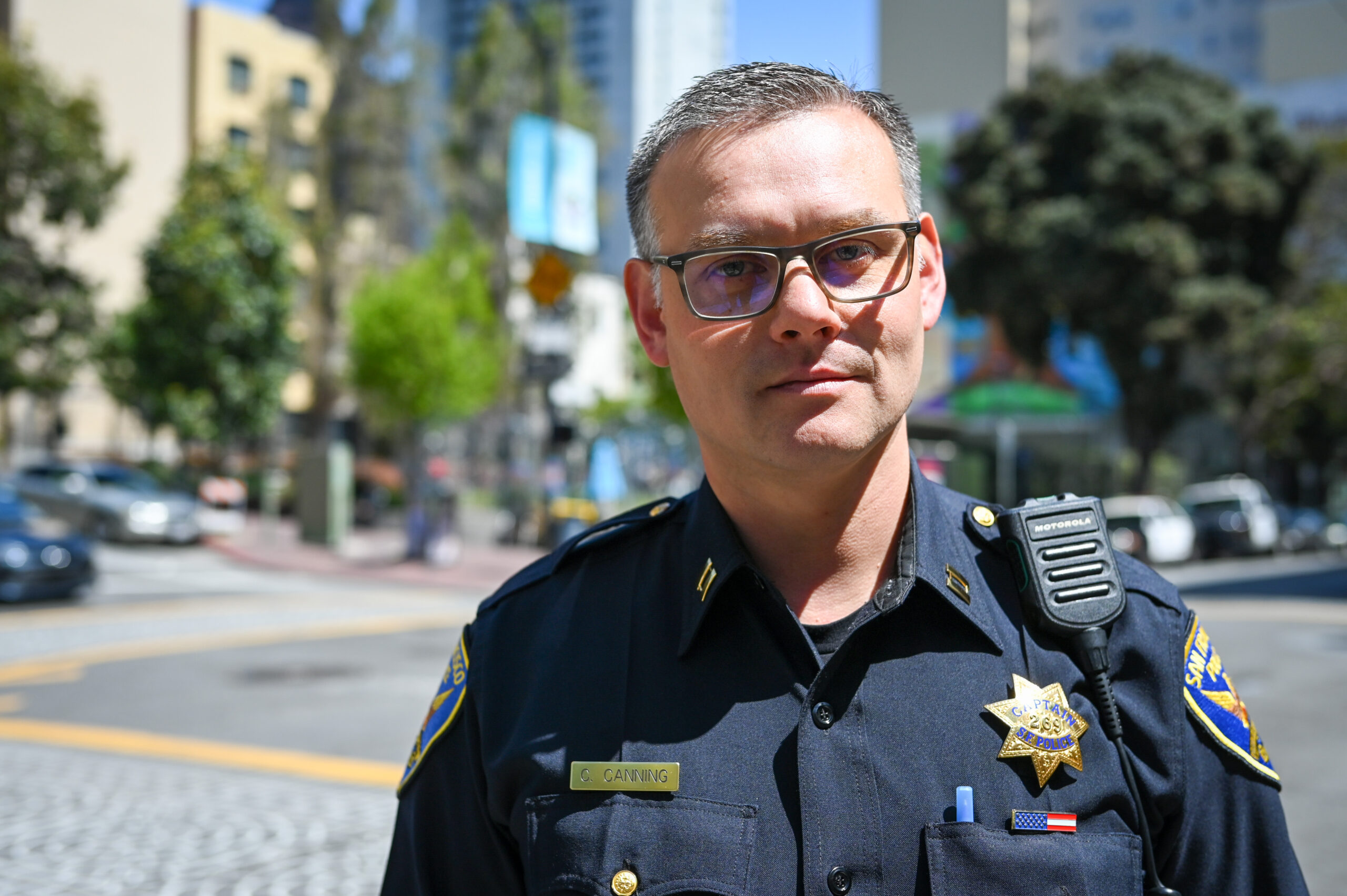A month has passed since the city deployed 20 additional police officers to the Tenderloin district, a San Francisco neighborhood that has historically been challenged by open-air drug use and crime.
But even prior to the additional deployment, which happened three months after Mayor London Breed vowed to crack down on crime in the neighborhood, people living in the bordering districts reported a noticeable migration of drug dealers and violence into their neighborhoods.
Tenderloin residents have also expressed a lack of palpable changes under the mayor’s emergency plan, many of them calling for additional police presence.
The Standard spoke with Tenderloin police captain Chris Canning about how his station is approaching the city’s most vexing issues.
It’s been a little over a month since 20 additional officers were deployed to the Tenderloin. Can you give us an update on those efforts? From your perspective, has it made a difference?
Absolutely, it’s made a difference.
Officers are assigned to what we call a fixed post, which is essentially standing at a corner or at a specific location. The visibility of police officers on foot or on bicycle has also been very helpful.
It encourages neighbors and residents to feel safe and to come out and engage in life on the street. That positive activation is a critical component to restoring the city after the pandemic. If there are more people activated or engaged in positive activity on the street, it reduces the likelihood of crime. So that’s one thing that happens with our deployment.
What is accounting for the rise of crime in neighboring districts? Is this due to displacement from the Tenderloin?
I’m sure there’s an element of that.
Certainly there are variables that impact other district stations. That could be anything from staffing to a significant focus in a particular neighborhood can cause displacement. I’m also not denying the fact that with a lot of police resources, it does impact the migration of a certain population of people that don’t want to be around the police.
It’s like how water follows the path of least resistance in that criminals will go wherever the cops aren’t.
But when crossing borders between two different stations, [criminals] aren’t going to be treated differently. When they break the law in the Tenderloin, it will be treated and responded to the same way that it is and the northern district or the Southern District, or the central district.
What role has Urban Alchemy played in moving crime around the neighborhood and the city? Do you think the non-profit is putting its workers in danger?
Urban Alchemy has been a great partner with a specific focus on positive activation. I don’t know if that’s a permanent solution. But I think it’s a great transition to helping folks who live in the neighborhood, or come to the neighborhood, feel comfortable with being out and about on the street or on the sidewalk.
They’re in no more or less danger than any other person walking in the neighborhood at that particular time. If there’s a pattern of particular criminal behavior, then we need to work on ways to address that through the police department.
Under the mayor’s emergency ordinance, law enforcement officers began accompanying outreach groups to approach people about shelter and treatment. What does that look like? Should officers be involved in those calls?
What you’re referring to is what we call the dual responder model. I’m a proponent of it. It acknowledges the fact that police officers aren’t trained mental health workers, they’re not trained social workers and they’re not trained medical workers.
Cops want to focus on criminal behavior, but you’ve got people who are challenged by addiction-related issues that tend to require a lot of medical interventions. There’s a place for the police to provide a sense of security to other outreach workers. San Francisco has been at the forefront of developing the teams of people to do that outreach.
What are your thoughts on the Tenderloin being called a containment zone? What can be done to relieve that title?
I can see why people say that; that is how they perceive it to be.
I understand that there are a number of factors that go into why cities are challenged by certain things. The transfer of intergenerational wealth, the migration of particular workforces and all these variables are very vexing and challenging to measure impact on where crime occurs.
There’s nothing I can do about the transfer of intergenerational wealth, or how development works or who decides to build a house or modify an apartment building in this neighborhood. But what we can do is we can identify historic challenges and problems that particular demographics or groups have.
We’re not always going to agree on how we do it, but any sort of constant and evolving focus in a particular area is going to benefit the neighborhood.
